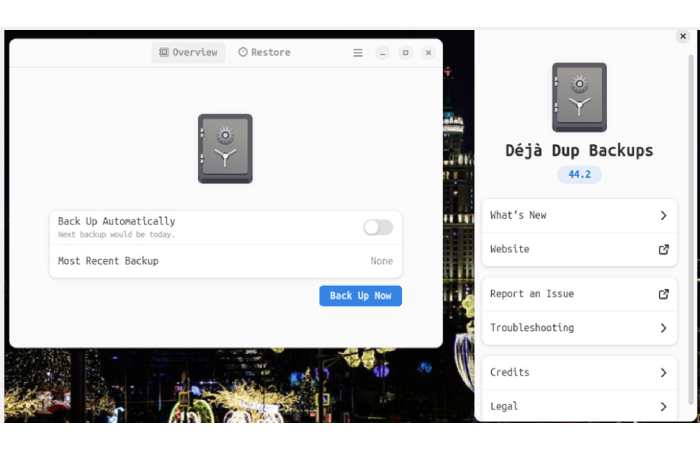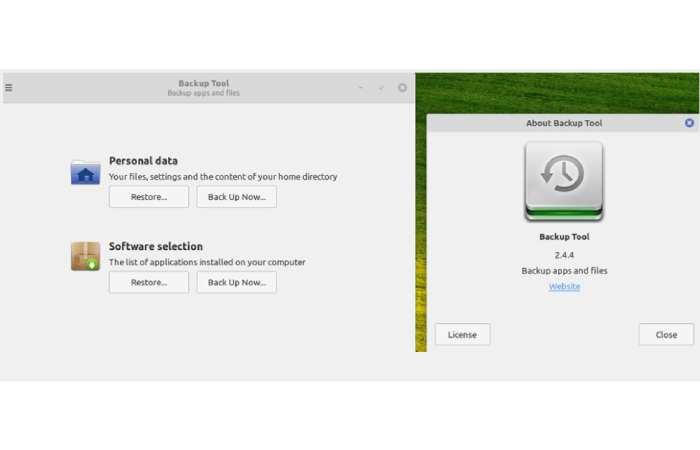After a disaster, restoring your personal data and operating system can be filled with grey areas and concerns that your backup device will miss important files.
This process can be challenging for Linux users due to the large number of storage tools from different Linux families, such as Debian, Arch, Red Hat, and Suse.
Choosing between different backup and recovery strategies complicates the process because constant adaptation is required to find the most suitable software solution. For example, do you need backup software stored locally or uploaded to cloud storage or external backup media? Another factor is what type of backup strategy is right for you.
One size does not fit all Linux use cases. The options available are complete, scale, range, and mirror, each with its characteristics.
Having the wrong type of backup system can be as detrimental as not having one at all. Optimizing your Linux OS and the data your applications create is a two-part process. One or both components fail to provide what you need when needed.
Over the years, I’ve used computer support systems, and personal files have occasionally been unreliable. Sometimes, it’s the software. Other times, it’s encrypting and transferring files to storage locations.
No matter the cause, defects happen. Here’s how to ensure you’re using a backup solution that’s more than just reliable.
Old School Data Backups
Working with a data warehouse is preparing for the inevitable.
A few years ago, when I used to use a home desktop and laptop on the road, I relied on an automatic, twice-daily scheduled backup to a hard drive. Every week, I would copy the backup file from both machines to an external hard drive for safekeeping, giving me a backup from the computer and a backup file always available on the local computer.
This took care of keeping my system up to date to restore the latest versions of system files and applications whenever) the computer crashed. After that, I needed to keep Microsoft Windows running on both machines in case file compatibility became an issue with project documents or program access.
Over time, I have installed different Linux distributions on one computer or another and set up a dual-boot system. This has created the possibility of boot failure, mainly on the Linux partition. Boot repair software does not always restore deleted or corrupted boot files. I have lost count of the times my backup files have saved the day or failed.
The Critical Role of Backup Storage Locations
Storing personal data files and work documents on flash drives was a common practice. Before shutting down one of the computers, I would run a software tool that would copy all the changed data files from the designated files to the external storage. When I returned to the other computer, an automated batch file would copy the changed files from the removable media to the hard drive.
This process ensured (for the most part, anyway) that both computers had up-to-date conversion files. When I added a switch or additional device, I used the same process to “penetrate” my backup networks.
When cloud storage became available, services like Google Drive, Dropbox, and others replaced flash drives. Network devices continue to save cloud storage and local hard drives.
Linux development can challenge newcomers, as different distributions sometimes make absolute reliability a moving target. Having the wrong type of backup system can be as detrimental as not having one at all.
Optimizing your operating systems and the data your applications create has two parts. One is the core files of your system applications. The other is the data files and documents you create.
If you haven’t checked where these files are stored on your Linux system, your backup device may not be there. A good starting point to check is your Linux home directory.
3-2-1 Backup Strategy
Over the years, I have used computers, and both storage devices have occasionally proven unreliable. This can be due to software errors in the encryption process or the transfer of backup files to storage locations.
To ensure reliable returns, I have added a new trick to my backup system: the 3-2-1 rule. This rule is a common way to ensure data security in almost any situation.
Here it works: Make three copies of your data and store them in two backup copies. This gives you the original files on your hard drive and two copies stored elsewhere. Call the third-party copy.
Another feature I strictly follow is uploading the backup system and personal data to a reliable, well-developed cloud centre. Most external storage platforms make this easy to do with their own or third-party applications.
Choosing the Right Linux Backup Method
Understanding the differences between backup software types can improve your file recovery success. If you use Linux or other operating systems, choose the storing type that best suits your needs.
Using the full backup method is like aiming a shotgun at a target. A full backup stores a copy of all the data on a storage device. The system captures all digital content and tracks where it is stored on the device.
How to Use a Squirrel Shotgun: Creating a full backup all the time can be tedious. It requires a lot of storage space and can be time-consuming. It is a waste because unchanged files continue to be copied with each backup session.
On the other hand, when you extend a backup, only the backup data changes from the previous backup. This type takes up the least space and time to create a backup. It also requires fewer computer resources.
A separate backup copies only those files that have changed since the last full backup. The name reinforces the idea that only “different” data is copied.
A mirror backup forms an exact copy of the data for selected files and folders at a specific time. The system saves only the latest versions of files to the storage. Mirror storage is often used to store data files.
One crucial precaution regarding mirroring system files (as opposed to personal data) is that the files created are owned only by the computer that created them. Using the same system cache on different computers risks introducing hardware differences, which can lead to time-consuming errors.
Identifying Effective Backup Tools for Linux
Linux distributions usually come with a backup tool pre-installed. Compare its capabilities with the storage strategies described above to ensure it meets your needs. If not, replace it with another Linux storage device that you get from your distribution’s software manager application.
Use the search box in the core menu to search for “backup”. This is usually the name used for everything in the pre-installed backup tool. Depending on the distribution, the name may be the same as the generic title. But the application is different.
For example, the two images below show a generic backup application on the left and the “About” screen next to it.


Both programs offer basic backup functionality with a few options for what files to back up and where to save them. The difference is in the type of backup schedule provided.
The Ubuntu backup tool uses the popular Deja Dup application I have used for years. The Linux Mint storage device is unrecognizable.
Concluding Advice on Linux Backup Tools
Search the Internet for a list of Linux storage resources. Read their descriptions to understand the details of each product, storage type, and the options offered to the user.
Most backup tools have similar menus and are easy to use with a few buttons. Unless you are an experienced Linux user, avoid terminal-based backup tools. Command-line programs require you to enter instructions to run and perform functions.
Rsync is a popular terminal program with a graphical user interface (GUI) called Grsync. Choosing a terminal program with a GUI version gives you more options and features to suit your needs.

